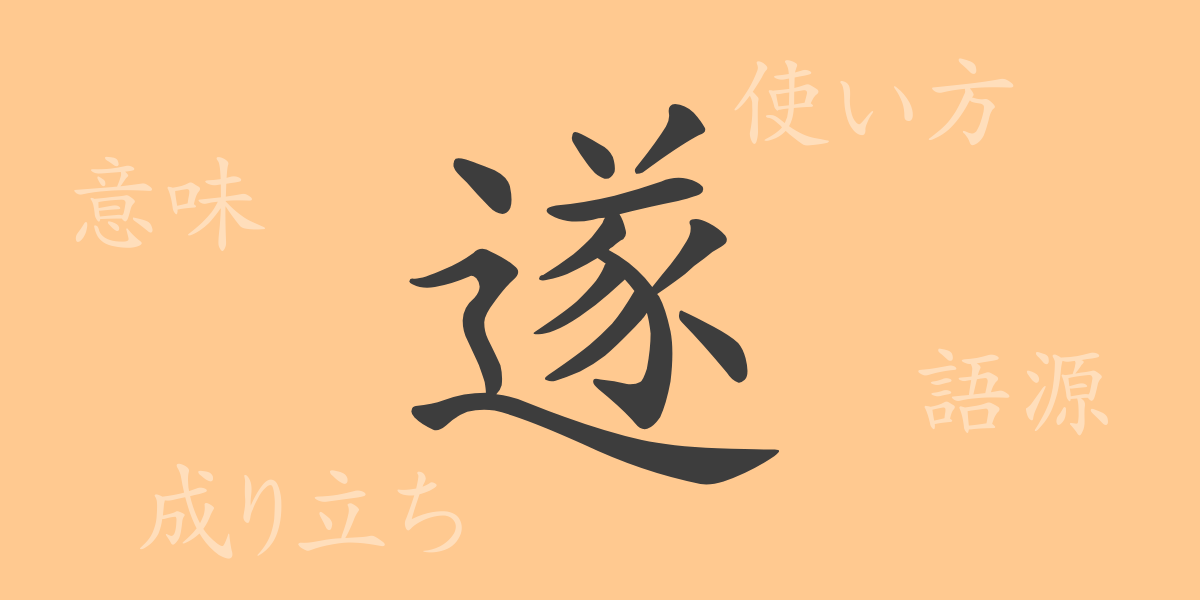Japanese culture is intricately linked with kanji, each character imbued with deep meanings and historical significance. Among the commonly used kanji, ‘遂’ (すい) plays a vital role in everyday life and expression. This article explores the origins, meanings, and applications of ‘遂’, delving into related idioms and phrases. Let’s explore the profound depth of this single character and its impact on language and communication.
Origins of 遂
The kanji ‘遂’ traces back to ancient China. Initially represented by the radical ‘辵’ (しんにょう), symbolizing movement along a path, combined with ‘𠂉’ (亍の旧字), a character depicting a person standing straight, it embodied the act of moving forward. Over time, its meaning evolved from merely moving along a path to ‘accomplishing something’ or ‘going to the end.’ Such transformations reflect changes in people’s lives and philosophies.
Meaning and Usage of 遂
The primary meanings of ‘遂’ include ‘to accomplish’ and ‘to carry through to the end.’ It denotes the completion of goals or plans and is often used to express the successful conclusion of actions. The character symbolizes not only the action itself but also the strong intention behind achieving set objectives and the satisfaction of accomplishing them.
Readings, Stroke Count, and Radical of 遂
Understanding the readings and structure of ‘遂’ is crucial for its use in Japanese:
- Readings: On’yomi ‘スイ’, Kun’yomi ‘とげる’, ‘ついに’
- Stroke Count: 12 strokes.
- Radical: ‘辵’ (しんにょう), representing movement along a path.
Idioms and Phrases Using 遂
‘遂’ appears in many idioms and phrases, enriching its use in Japanese with various nuances:
- 成し遂げる: To accomplish or finish a task or objective completely.
- 遂に: Finally or at last, used when something long-awaited is realized.
- 意を遂げる: To fulfill one’s intentions or desires.
- 遂げる: Used in the sense of accomplishing or completing something.
Conclusion on 遂
The kanji ‘遂’ encapsulates the determination to achieve goals and the joy of eventual success. It is an essential character in Japanese, used in various idioms and expressions to depict perseverance and the culmination of efforts. Understanding each character’s underlying meanings allows for a deeper appreciation of the beauty and complexity of the Japanese language.

























